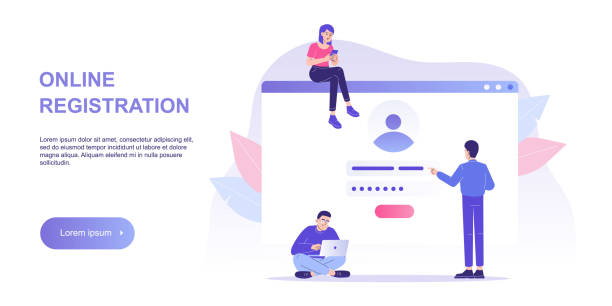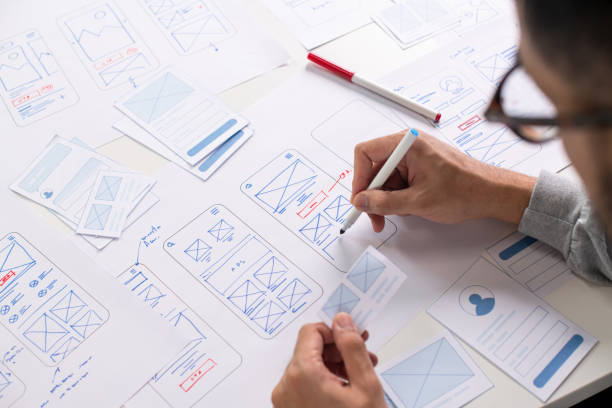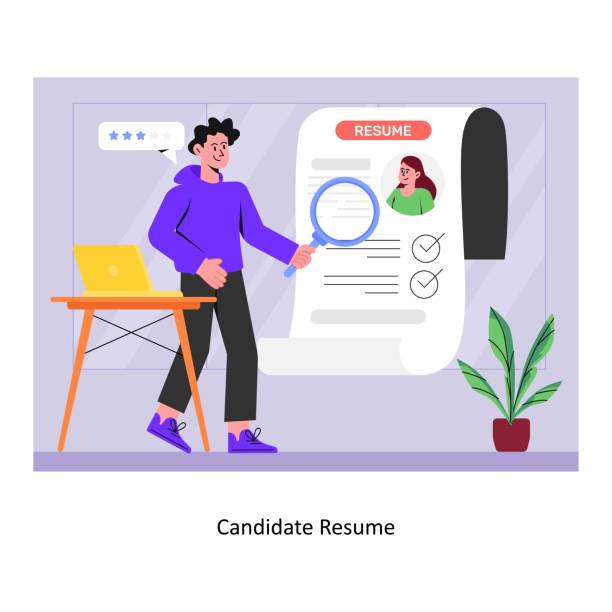Why Do You Need a Personal Website? The Necessity of Presence in the Digital Space
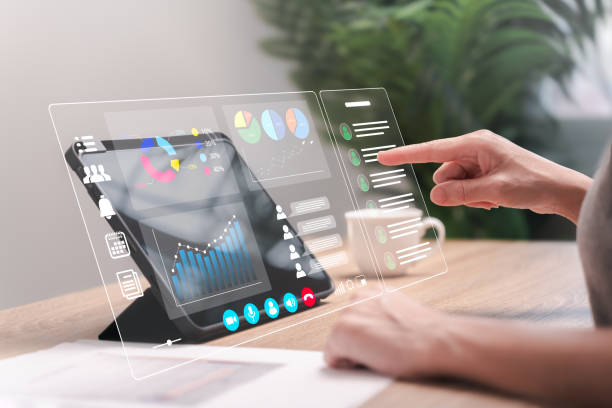
In today’s world, where physical boundaries are fading and communications are moving more than ever towards the #online space, having a personal website is no longer a luxury choice, but an undeniable necessity.
This website not only acts as a digital portfolio to showcase your #skills, #experiences, and #projects, but also provides a platform for direct communication with audiences, potential employers, and colleagues.
This personal space allows you to present a precise and professional image of yourself, without being limited by social media templates.
In fact, personal website design gives you complete control over your content and its presentation, significantly increasing your credibility in your field of work.
A personal website can establish your online identity and show that you are serious and committed in your field of work.
This platform allows you to go beyond a simple resume; you can have visual portfolios, specialized articles, personal opinions, and even a blog for sharing your knowledge.
This explanatory and educational aspect helps your audience gain a deeper understanding of your capabilities and perspectives.
Also, in the age of information, having a place where you can freely publish your thoughts and ideas without the filters of other platforms is very valuable.
This freedom of action enables you to develop your personal brand in a unique way and convey your message to the world with greater power.
Therefore, the importance of personal website design should not be underestimated; it is an investment in your professional future.
Are you worried about losing customers because you don’t have a professional e-commerce site?
With e-commerce site design by Rasav, forget these worries!
✅ Significant increase in sales and conversion rate from visitor to customer
✅ Professional and user-friendly design that gains customer trust
⚡ Get free consultation from Rasav
Defining Goals and Identifying Audiences for Your Personal Website Design

Before taking any steps for personal website design, it is necessary to accurately define your goals and identify your main audience.
This guidance step will be the foundation of all subsequent decisions in your website design and development process.
Is your goal to showcase your portfolio to attract clients? Do you intend to share your knowledge through articles and tutorials? Or perhaps you are looking to create a dynamic online resume for employment? The answers to these questions will determine the overall design path.
For example, if your goal is to attract employers, the website’s content should focus on work experience, skills, and completed projects, whereas for an instructor, educational content and specialized articles take precedence.
Audience identification is equally crucial.
Are your audiences students, industry colleagues, employers, or the general public? Understanding the needs, interests, and knowledge level of your audience helps you tailor the website’s content and design to be attractive and understandable to them.
For example, using specialized language for a general audience might confuse them, while it is essential for specialists.
This analytical and strategic section ensures that your website not only looks beautiful but also has the necessary functionality to achieve your goals.
A successful personal website is one that creates value for both you and its visitors.
Ignoring this stage can lead to a waste of time and resources in the personal website design process.
Choosing the Right Platform and Hosting for Your Personal Website
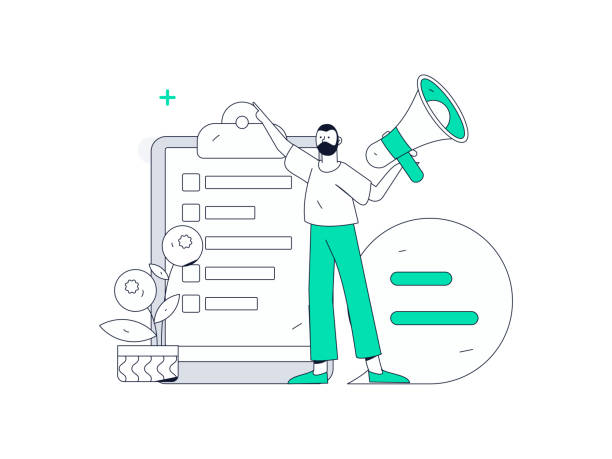
After defining your goals and audience, the next step in personal website design is choosing the right platform and hosting service.
These choices form the technical foundation of your website and directly impact its performance, security, and scalability.
For platforms, there are numerous options, each with its own advantages and disadvantages.
WordPress, due to its high flexibility, diverse plugins, and large user community, is one of the most popular choices for personal website design.
Joomla and Drupal are also powerful CMSs that are more suitable for complex projects.
If you have programming knowledge, you can use frameworks like React, Angular, or Vue.js for custom development.
Choosing hosting is as important as the platform.
Good hosting should provide high speed, adequate security, and proper technical support.
Hosting options include shared hosting (suitable for beginners), VPS (Virtual Private Server), and Dedicated Server (for high traffic and specific needs).
For a personal website, which typically has lower initial traffic, shared hosting is often a cost-effective option.
This part of the discussion is very specialized and requires careful research.
Ultimately, the quality and stability of hosting directly affect user experience and your ranking in search engines.
Below is a brief comparison of common platforms:
| Platform | Advantages | Disadvantages | Suitable for |
|---|---|---|---|
| WordPress | High flexibility, many plugins, large user community, easy to use | Requires regular maintenance, security concerns if not updated | Blogs, portfolios, small business websites |
| Joomla | Stronger for complex content management, multilingual capabilities | More complex than WordPress, requires more technical knowledge | Corporate websites, portals, medium-sized online stores |
| Manual Design (HTML/CSS/JS) | Full control, lightweight and fast, high security (if coded correctly) | Requires coding knowledge, time-consuming for development and updates | Highly specific websites, landing pages, static portfolios |
The Importance of Visual Design and User Experience (UI/UX) in a Personal Website
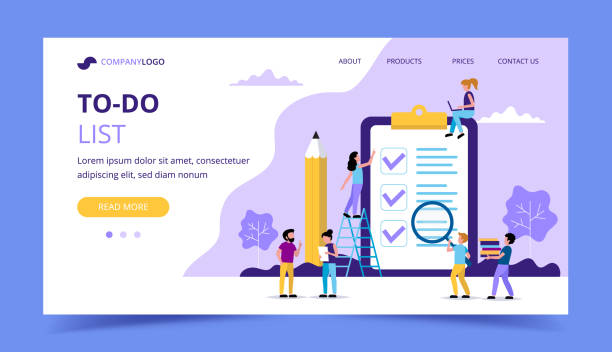
Visual Design (UI) and User Experience (UX) are two main pillars in the personal website design process that ensure its ultimate success.
UI refers to the look and feel of the website (colors, fonts, element layout), while UX deals with how users interact with the website and its ease of use.
A website with attractive UI and excellent UX encourages visitors to stay and explore more, increasing your credibility.
Personal website design should not only be beautiful but also functional and understandable.
This analytical approach helps you create a pleasant experience for users.
Keep in mind that your website must be responsive, meaning it should display correctly on all devices, including computers, tablets, and mobile phones.
This is not only essential for user experience but also affects your site’s SEO.
Easy and logical navigation, fast page loading times, appropriate use of white space, and clear visual hierarchy are all critical factors in UX design.
The ultimate goal of personal website design is for visitors to easily find the information they need and enjoy interacting with your site.
A website with poor user experience, even with fantastic content, will quickly lose users.
Does losing customers due to your e-commerce site’s outdated appearance or slow speed bother you? Rasav’s expert team solves these problems with professional e-commerce site design!
✅ Increase customer trust and your brand credibility
✅ Stunning speed and excellent user experience
Get a free consultation with Rasav now ⚡
Powerful Content Writing for Your Personal Website
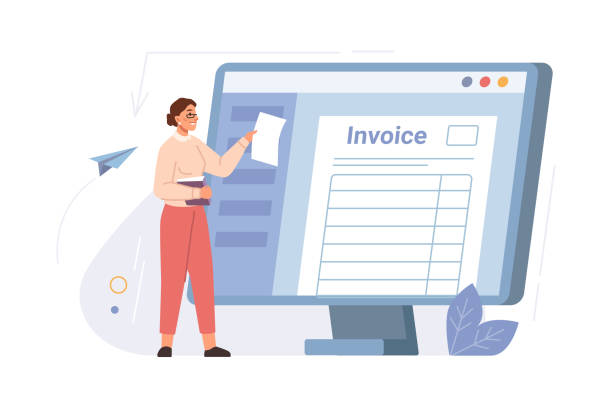
After completing the technical and visual stages of personal website design, it’s time for the beating heart of any website: content creation.
Your content should not only convey necessary information but also be engaging, unique, and aligned with your goals and audience.
This section is educational and specialized, requiring great attention to detail.
For a personal website, content can include your introduction (biography), portfolio, blog articles, client testimonials, and contact methods.
Every word and every image you place on your site must be carefully chosen to convey your message in the best possible way.
Using keywords relevant to your field of activity is also very important in improving your site’s SEO.
Your content should answer visitors’ potential questions and engage them.
You can use various content formats such as text, images, videos, infographics, and podcasts to make your website more dynamic and attractive.
An active blog, regularly updated with quality articles, not only helps increase site traffic but also positions you as a knowledge resource in your field.
Thought-provoking (question-generating) or entertaining content can also lead to more user interaction and increased time spent on your site.
Remember that in personal website design, content is king, and without valuable content, even the best designs will be useless.
Search Engine Optimization (SEO) for Personal Website Visibility
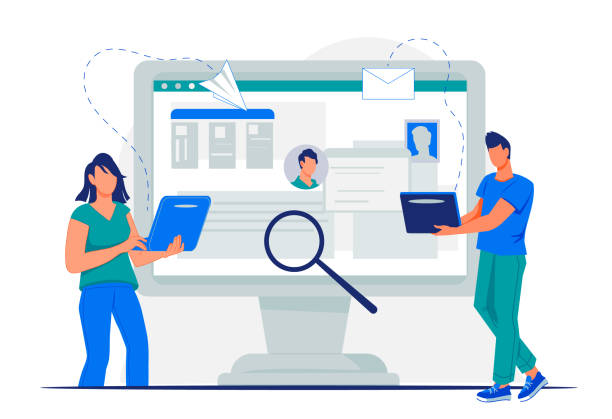
After the personal website design and content creation stages, the next vital step for your site’s visibility online is Search Engine Optimization, or SEO.
SEO is a set of actions that help improve your website’s ranking in Google and other search engine results, driving organic (free) traffic to your site.
This part of the work is highly specialized and analytical, requiring continuous knowledge and follow-up.
The main elements of SEO include On-Page SEO and Off-Page SEO.
On-Page SEO includes optimizing page titles, meta descriptions, keywords in the text, image optimization, URL structure, and internal linking.
Ensuring your content is rich with relevant keywords, but not to the extent of Keyword Stuffing, is very important.
Website loading speed, mobile compatibility, and having a sitemap are other critical factors in On-Page SEO.
Off-Page SEO mostly relates to building links from other reputable websites (Backlinks) and social media activity.
Quality links from authoritative sites increase your site’s credibility in the eyes of search engines.
Keeping information up-to-date, publishing fresh and valuable content, and monitoring website performance with tools like Google Search Console and Google Analytics are among the continuous measures in optimizing your personal website for search engines.
Remember that SEO is a time-consuming process and its results appear gradually, but it is crucial for success in personal website design.
Adding Interactive and Dynamic Features to Your Personal Website
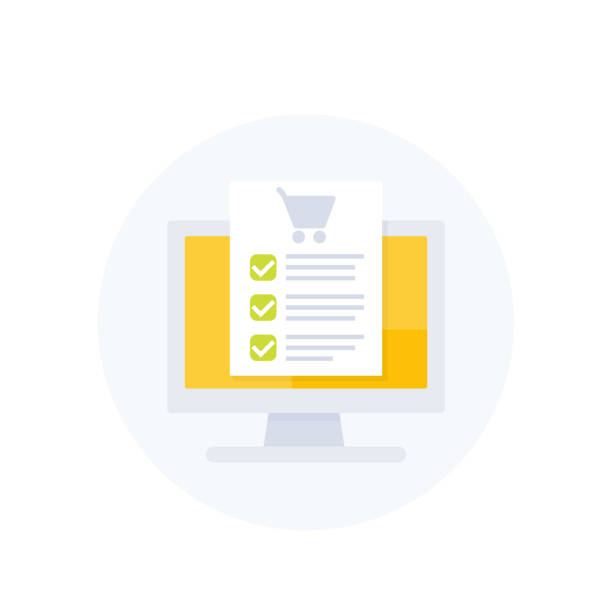
To increase the attractiveness and effectiveness of a personal website, having only static content is not enough; adding interactive and dynamic features can significantly improve user experience and encourage visitors to engage more with your site.
This approach transforms your website from a static document into a living, dynamic platform.
These features include contact forms, comment sections, filterable portfolios, dynamic image galleries, and online chat.
These features allow users to interact with your content or even with you in various ways.
Creating sections like surveys or small tests related to your field can add an entertaining and thought-provoking content aspect to your site and keep users engaged for longer periods.
If your website has an educational aspect, you can implement a simple Learning Management System (LMS) or provide the ability to offer e-books and downloadable resources.
In the realm of personal website design, the more interactive opportunities you can create, the higher the return visitor rate and their loyalty to your personal brand will be.
Finally, tools like social sharing buttons also allow users to easily share your content with their friends, helping to increase your site’s visibility and traffic.
Adding these capabilities transforms your personal website design from a mere resume into a hub of interaction and value creation.
| Interactive Feature | Description | Advantages |
|---|---|---|
| Contact Form | Allows visitors to send direct messages to you | Increased communication, feedback reception, collaboration opportunities |
| Comments Section | Allows leaving comments on articles or portfolios | Increased interaction, community building, user-generated content |
| Interactive Portfolio | Displays projects with filters, pop-up descriptions, and direct links | Better visual experience, easy organization of portfolios, client attraction |
| Social Sharing | Buttons for sharing content on social networks | Increased website visibility, referral traffic, viral marketing |
Personal Website Security and Maintenance: Long-Term Sustainability

After completing your personal website design and launching it, your work is not over; it has just begun! Regular website security and maintenance are two crucial aspects that ensure its long-term stability and proper functioning.
Ignoring these can lead to irreversible damages such as data loss, cyberattacks, or website downtime.
This section of the discussion is specialized and also contains thought-provoking content about potential risks.
For security, installing an SSL (HTTPS) certificate for data encryption, using strong passwords, regularly updating the platform (e.g., WordPress) and plugins, and installing reputable security plugins are highly important.
Also, regularly creating backups and storing them in a secure location will save you from the catastrophe of data loss.
Regarding maintenance, continuous database optimization, checking for broken links, removing old or unnecessary content, and monitoring website performance using tools like Google PageSpeed Insights help maintain your site’s speed and efficiency.
Remember that any news about new vulnerabilities in content management systems or plugins must be taken seriously to keep your website always secure.
A personal website design that is weak in terms of security will quickly lose its credibility and may be penalized by search engines.
Are you worried about losing customers because you don’t have a professional e-commerce site?
With e-commerce site design by Rasav, forget these worries!
✅ Significant increase in sales and conversion rate from visitor to customer
✅ Professional and user-friendly design that gains customer trust
⚡ Get free consultation from Rasav
Promoting and Marketing Your Personal Website: Expanding Your Reach
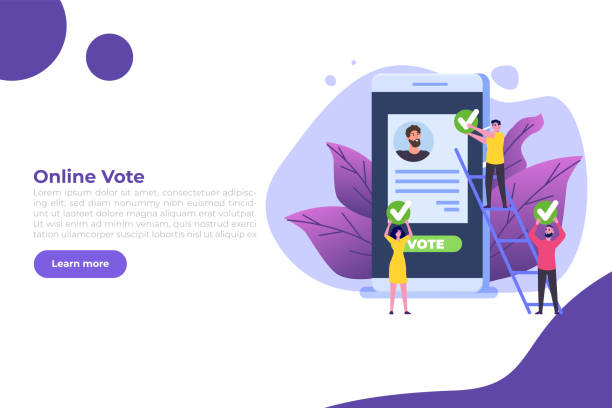
Building a great personal website is only half the battle; for it to achieve its goals, it must be properly promoted and marketed.
This stage, which has a guidance and specialized aspect, helps you introduce your website to your target audience and attract the necessary traffic.
One of the most effective ways is to use social media.
By sharing links to blog articles, portfolios, or introducing your services on platforms like LinkedIn, Instagram, or Twitter, you can attract new visitors to your website.
Also, email marketing is a powerful tool.
Collecting visitors’ emails through subscription forms and sending regular newsletters containing fresh content or relevant news can help maintain communication with your audience and bring them back to your site.
Participating in specialized forums and blogs related to your field of activity, and providing useful comments along with a link to your personal website, can act as a content marketing strategy.
Participating in webinars, podcasts, and online conferences also offers excellent opportunities to introduce your personal website design and build a professional network.
Finally, you can use paid advertising such as Google Ads or social media advertising to reach your target audience faster, considering your budget and expected return.
Remember that website marketing is a continuous process, and you should always look for new ways to expand your reach.
Analyzing Personal Website Performance and Continuous Improvement
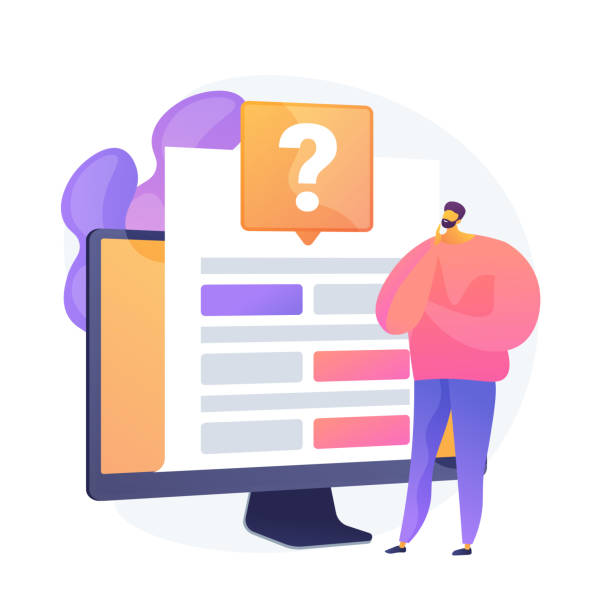
After personal website design and its launch, the final but very important stage is analyzing website performance and implementing continuous improvements.
This analytical and guidance approach helps you get the most out of your investment in your personal website.
Tools like Google Analytics and Google Search Console provide valuable data on website visitors, traffic sources, keywords used, most visited pages, and bounce rate.
By regularly reviewing this data, you can identify your website’s strengths and weaknesses.
For example, if you notice that visitors quickly leave a particular page, that page might need a content or design overhaul.
If specific keywords bring a lot of traffic to your site, you can produce more content in that area.
This data allows you to make more informed decisions for optimizing user experience, improving SEO, and increasing conversion rates (e.g., attracting clients or collaboration opportunities).
You can also use surveys and direct visitor feedback to improve your site.
An Agile approach to website development, which includes small cycles of improvement and testing, can help you maintain the dynamism and increase the efficiency of your personal website design.
Your website is a living entity that requires continuous attention and updates to stand out in today’s competitive digital world.
Frequently Asked Questions
| Question | Answer |
|---|---|
| Why should I have a personal website? | A personal website helps you build your personal brand, showcase your skills and portfolio, connect with your audience, and gain new career opportunities. |
| What steps should be taken to design a personal website? | The steps include defining your goal, choosing a domain name and hosting, selecting a platform (e.g., WordPress), designing the user interface, producing content, optimizing for search engines (SEO), and launching. |
| Do I absolutely need to know coding to design a personal website? | No, using Content Management Systems (CMS) like WordPress or Website Builders like Wix and Squarespace, you can design your website without needing to code. |
| What is a Domain Name and how do I choose one? | A domain name is your website’s address on the internet (e.g., yourname.com). It’s best to choose a short, memorable name relevant to you or your business, with a suitable extension (like .com, .ir). |
| What is Hosting and why do I need it? | Hosting is a space on the internet where all your website’s files and information (such as images, texts, codes) are stored so they are always accessible to users. Without hosting, your website will not be visible. |
| What should the content of a personal website include? | Content usually includes an About Me page, portfolio, services/skills, blog (articles), contact information, and a contact form. |
| How can I optimize my personal website for search engines (SEO)? | By using relevant keywords, producing quality content, improving website loading speed, being responsive for mobile, building internal and external links, and optimizing title and description tags. |
| Why is Responsive Design important for a personal website? | Responsive design ensures that your website displays correctly on all devices (computers, tablets, mobile phones) and provides a good user experience, which is also important for SEO. |
| What should I do for personal website security? | Use an SSL certificate (HTTPS), regularly update the platform and plugins, use strong passwords, perform regular backups, and install firewalls or security plugins. |
| How can I increase my personal website’s traffic (visitors)? | Through SEO optimization, content marketing (blogging), social media activity, email marketing, online advertising, and collaborations with other websites. |
And other services of Rasav Advertising Agency in the field of advertising
Smart Digital Advertising: An innovative service for increasing click-through rates by optimizing key pages.
Smart Link Building: Professional optimization for customer acquisition using attractive UI design.
Smart Brand Identity: An effective tool for analyzing customer behavior with precise audience targeting.
Smart Customer Journey Map: An effective tool for increasing click-through rates with marketing automation.
Smart Direct Marketing: Professional optimization for increasing sales using custom programming.
And over a hundred other services in the field of internet advertising, advertising consultation, and organizational solutions
Internet Advertising | Advertising Strategy | Advertorial
Resources
- Personal Website Design: Step-by-Step Guide
- Comprehensive Guide to Building a Personal Website
- The Importance of a Personal Website for Digital Success
- How to Create a Professional Personal Website
? With Rasav Afarin, your business gains new life in the digital world. With expertise in secure website design, search engine optimization (SEO), and online advertising campaign management, we are with you on the path to success.
📍 Tehran, Mirdamad Street, next to Bank Markazi, Kazeroun Jonoubi Alley, Ramin Alley No. 6

